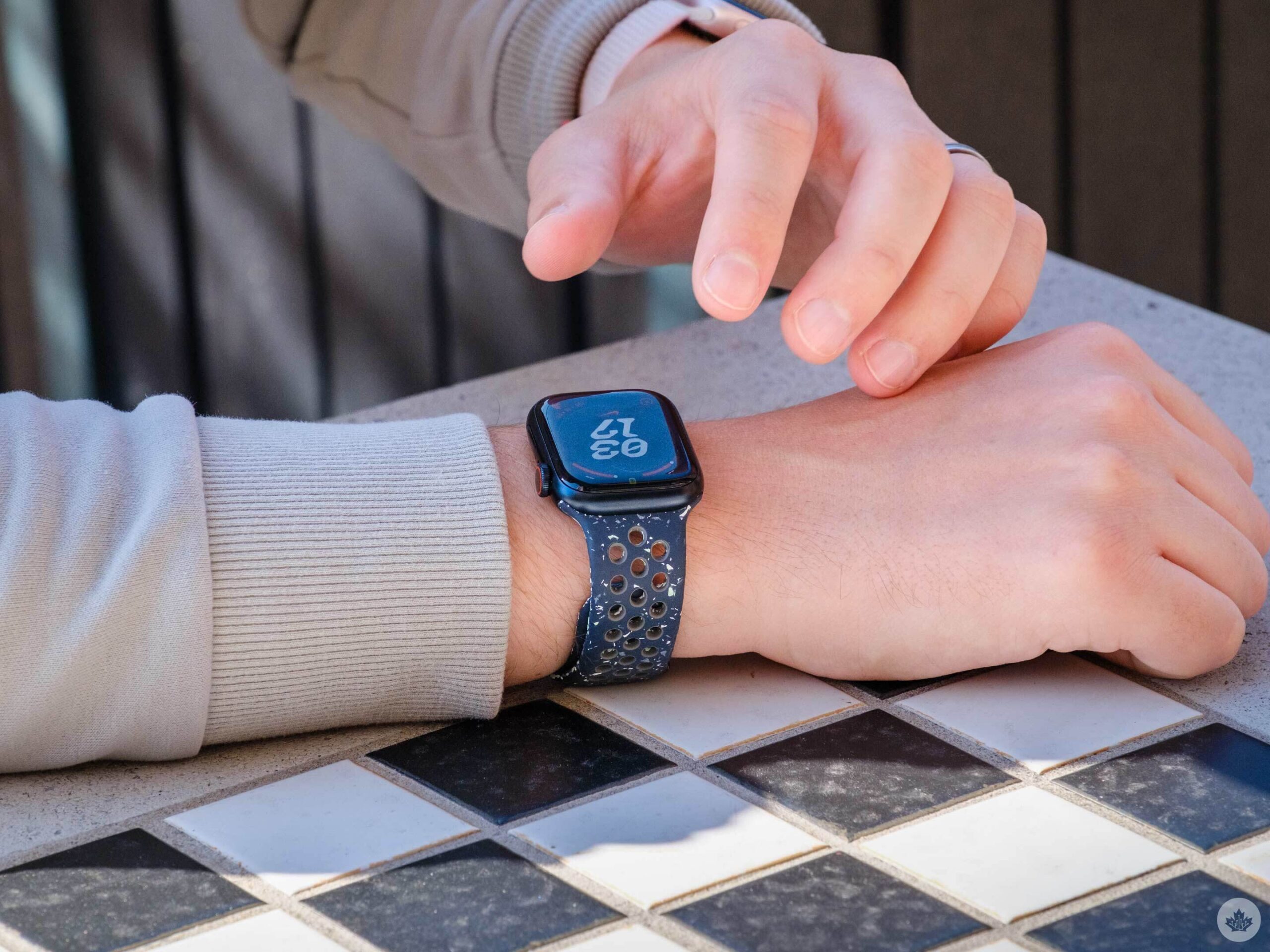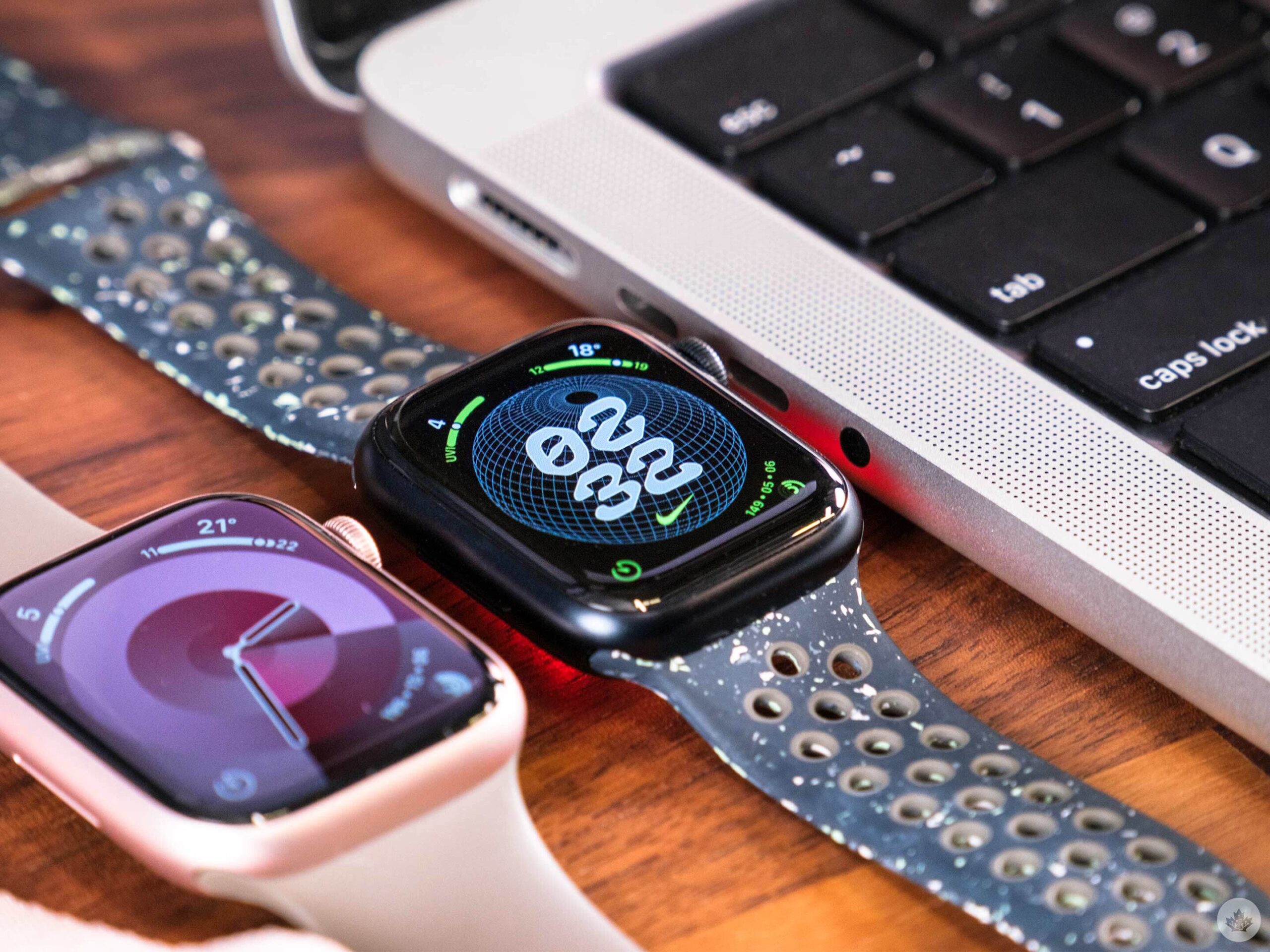Another year, and yet another Apple Watch.
As has been the case for the last few iterations, the Apple Watch Series 9 is an incremental step forward for Apple’s popular smartwatch line. It features a new S9 processor, a brighter display, on-device Siri for faster responses and updated ultra wideband.
It’s also set to be updated with a very cool feature called ‘Double Tap’ later this fall. This gesture allows the wearer to perform actions by pinching their fingers, including stopping a timer and answering/dropping calls (Double Tap is also coming to the Apple Watch Ultra 2). I‘ll update this Series 9 review with impressions and a new score once I go hands-on with Double Tap’s public release next month.
But broadly speaking, the Series 9 is the same smartwatch Apple has released for the last few years. It looks identical, still features an LTPO OLED always-on screen and is packed with health features, including a heart rate sensor, an SpO2 body temperature sensor, an ECG sensor and more.
If you were hoping this would be the redesigned Apple Watch many have been waiting for, the Series 9 isn’t it.
That doesn’t make it a bad smartwatch, however. In fact, along with Samsung’s Galaxy Watch 6 and Google’s Pixel Watch, it remains one of the best, if not the best, smartwatch out there. This means that if you’re using a Series 7, Series 8 or maybe even a Series 6, there might not be enough here to warrant an upgrade, especially since iOS 10 is coming to Apple’s older smartwatches.
What’s new
First off, the Apple Watch Series 9’s edge-to-edge, always-on display can now hit 2,000 nits of brightness, a massive step above the 1,000 nits of brightness the Series 8 is capable of. In my few days with the Series 9 so far, the brighter screen is easier to see under direct sunlight, just like the Apple Watch Ultra I’ve been using for the past few months. In fact, I recently switched to the Apple Watch Ultra for the brighter display alongside the better battery life (the Apple Watch Ultra 2 can hit 3,000 nits of brightness), and I find the Series 9’s brightness matches the rugged wearable’s.
This makes apps like Waterspeed, a sailing tracking app, easier to use when I’m out on the water in the middle of the day in peak sunlight, a situation where I found the Series 8’s screen difficult to see.
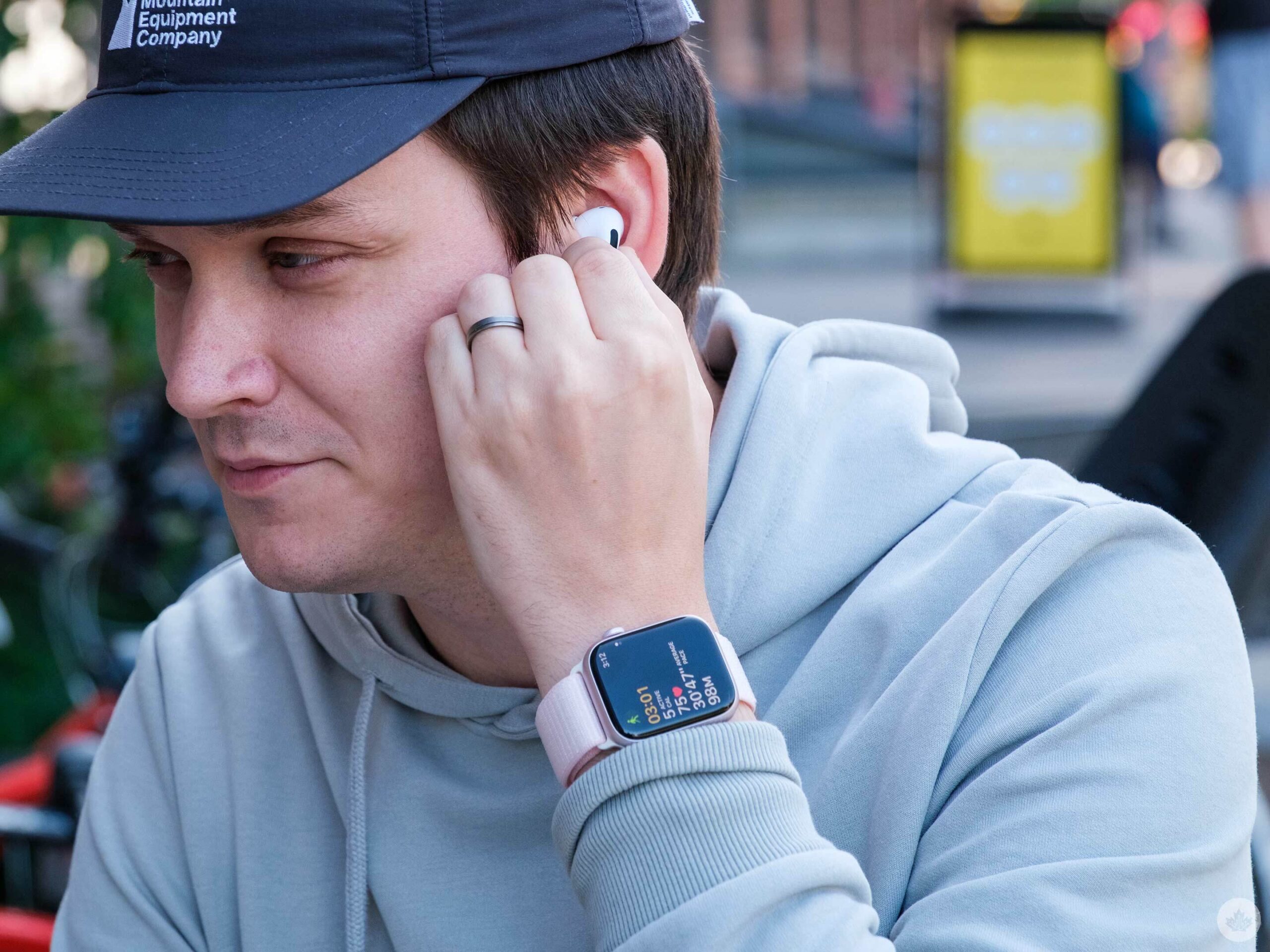 Next, there’s the new S9 chip. Given Apple has stuck with the S8 chip since the Series 6, the smartwatch is long overdue for a processor bump. That said, I didn’t run into slowdown issues with the S8, and while the S9 is clearly more powerful, I haven’t noticed much of a performance boost in day-to-day use. On the other hand, Apple says the S9 chip powers the Series 9’s on-device Siri processing, allowing the smartwatch to quickly respond to requests like starting a workout or setting a timer.
Next, there’s the new S9 chip. Given Apple has stuck with the S8 chip since the Series 6, the smartwatch is long overdue for a processor bump. That said, I didn’t run into slowdown issues with the S8, and while the S9 is clearly more powerful, I haven’t noticed much of a performance boost in day-to-day use. On the other hand, Apple says the S9 chip powers the Series 9’s on-device Siri processing, allowing the smartwatch to quickly respond to requests like starting a workout or setting a timer.
I didn’t use Siri very often with the Apple Watch until the Series 9, partly because it’s often quicker to manually do whatever I’m telling the voice-activated assistant to take care of. With the Series 9, that’s changed thanks to how quickly it responds to commands, and I’ve found myself using Siri more frequently when my hands are full.
‘Double Tap’ to the future
Sticking with the benefits of the S9 chip, it powers the Apple Watch Series 9 and Apple Watch Ultra 2’s new ‘Double Tap’ gesture, which detects subtle changes and movements in your blood flow through the wearable’s accelerometer, gyroscope and optical heart sensor when you make a pinching gesture.
“It seems like Apple aims to introduce a new form of interacting with the Apple Watch ahead of the Vision Pro’s release.”
With Double Tap, you tap your index finger and thumb together to interact with the watch, including answering calls, starting/stopping a timer or navigating watchOS 10’s Smart Stack (more on this later). It’s a futuristic-feeling action that’s almost too cool to believe it really works, but I tried it on the Series 9 at Apple’s ‘Wonderlust’ event and was impressed with how consistently Double Tap activated. In fact, it worked every time I made the gesture, even in the crowded hands-on area at Apple’s event. Unfortunately, Double Tap won’t be available at launch — you’ll need to wait until October to start pinching the air.
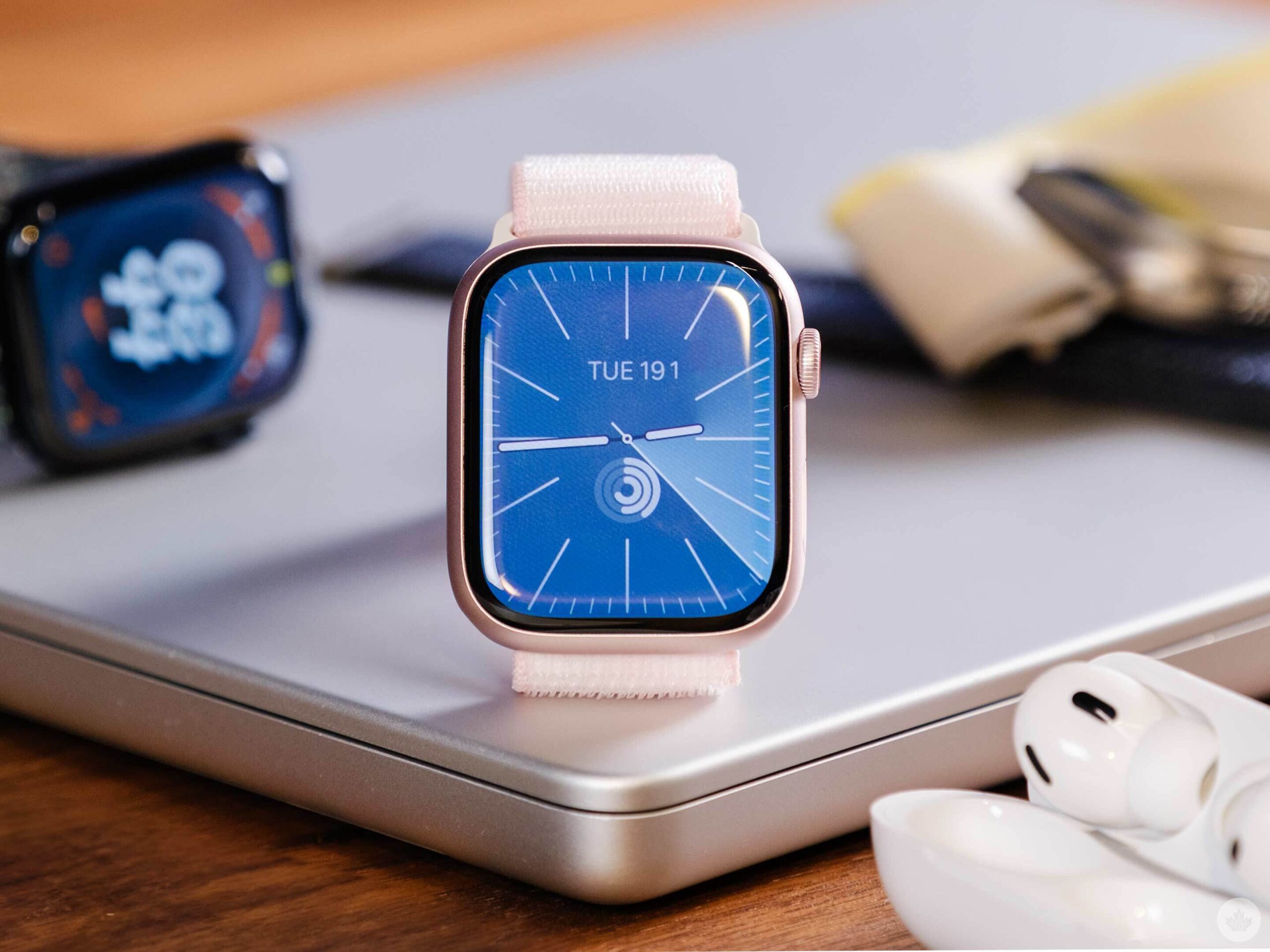 Double Tap is similar to an existing Apple Watch accessibility feature called AssistiveTouch, which allows users to control the smartwatch with only one hand. Apple says it’s fine-tuned the gesture to be more consistent and accurate with Double Tap. In my experience using Double Tap, this seems to be true, but as always, this is the kind of claim you need to take the tech giant’s word on.
Double Tap is similar to an existing Apple Watch accessibility feature called AssistiveTouch, which allows users to control the smartwatch with only one hand. Apple says it’s fine-tuned the gesture to be more consistent and accurate with Double Tap. In my experience using Double Tap, this seems to be true, but as always, this is the kind of claim you need to take the tech giant’s word on.
I think about it this way: AssistiveTouch is the beta version of the gesture, while Double Tap is Apple bringing it mainstream.
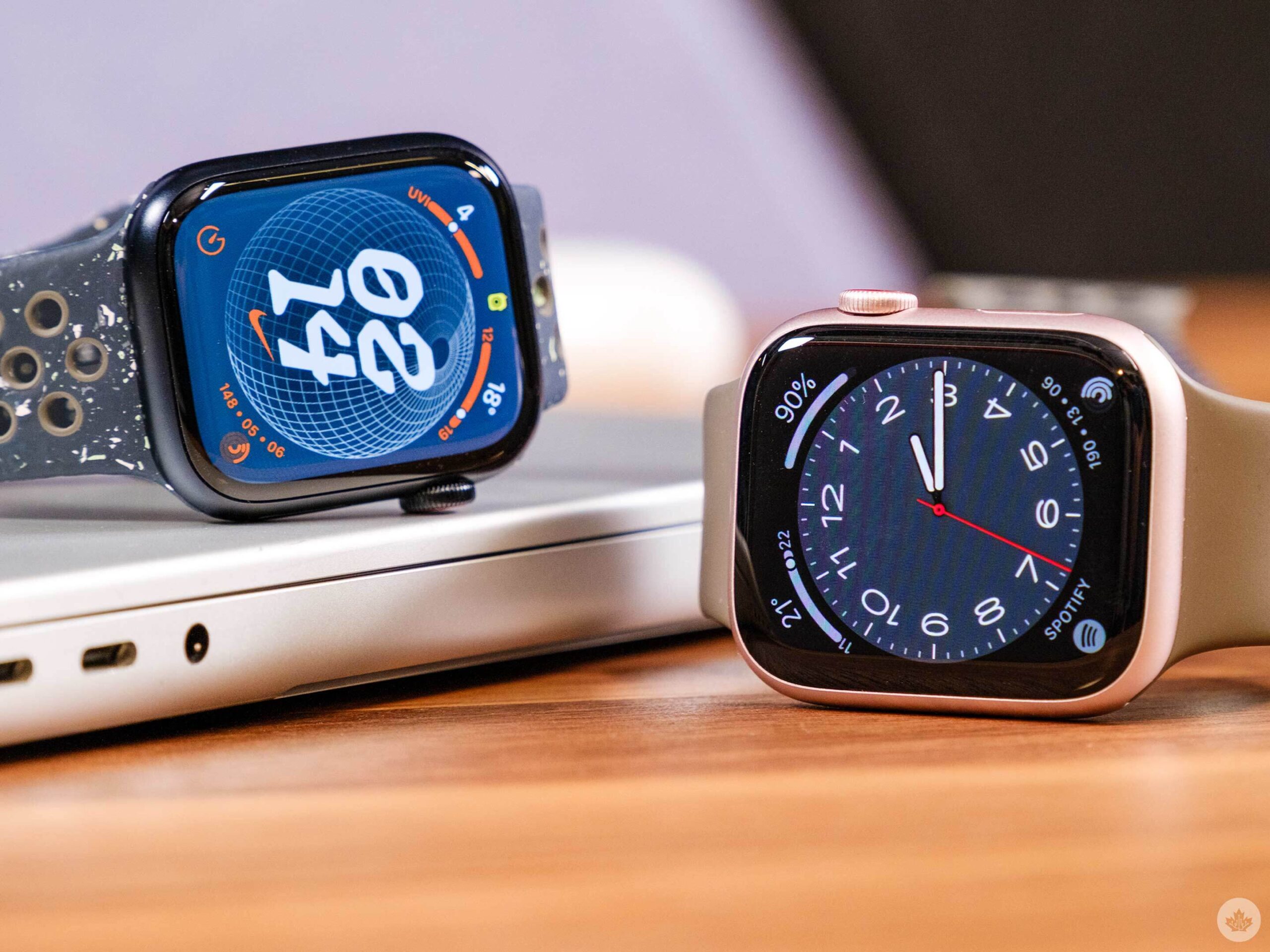 According to Apple, Double Tap will be capable of the following:
According to Apple, Double Tap will be capable of the following:
• Phone: Answer/end calls
• Messages: Reply using dictation
• Smart Stack: Advance widgets
• Timer: Pause/resume, end
• Stopwatch: Stop/resume
• Alarm: Snooze
• Music: Play/pause
• Podcasts/audiobooks: Play/pause
• Compass: Toggle to Elevation dial
• Flashlight: Toggle between three modes
• Notifications: Perform primary action
It’s worth noting that Double Tap is very similar to the pinch gesture used to interact with Apple’s Vision Pro augmented reality/virtual reality (AR/VR) headset. It seems like Apple aims to introduce a new form of interacting with the Apple Watch ahead of the Vision Pro’s release, priming Apple users for a potential future filled with gesture controls. With this in mind, we might see more gestures make their way to the Series 9/Ultra 2 and future Apple Watches.
watchOS 10 is great
watchOS 10 is a solid upgrade to Apple’s smartwatch operating system. I’ve been using the beta version of the overhauled OS for the past several weeks, and the experience has been great. After a bit of a learning curve, I was able to get used to the new controls but be warned that things have changed slightly. In some ways, watchOS 10 makes Apple’s smartwatches feel entirely new — it really is that different.
The Control Center now opens with the side button, so that means the app switcher is moved to a double tap on the Digital Crown. Swiping up or rolling up on the crown opens the new Smart Stack of Widgets. Scrolling reveals relevant information, and there are a few quick shortcuts at the bottom.
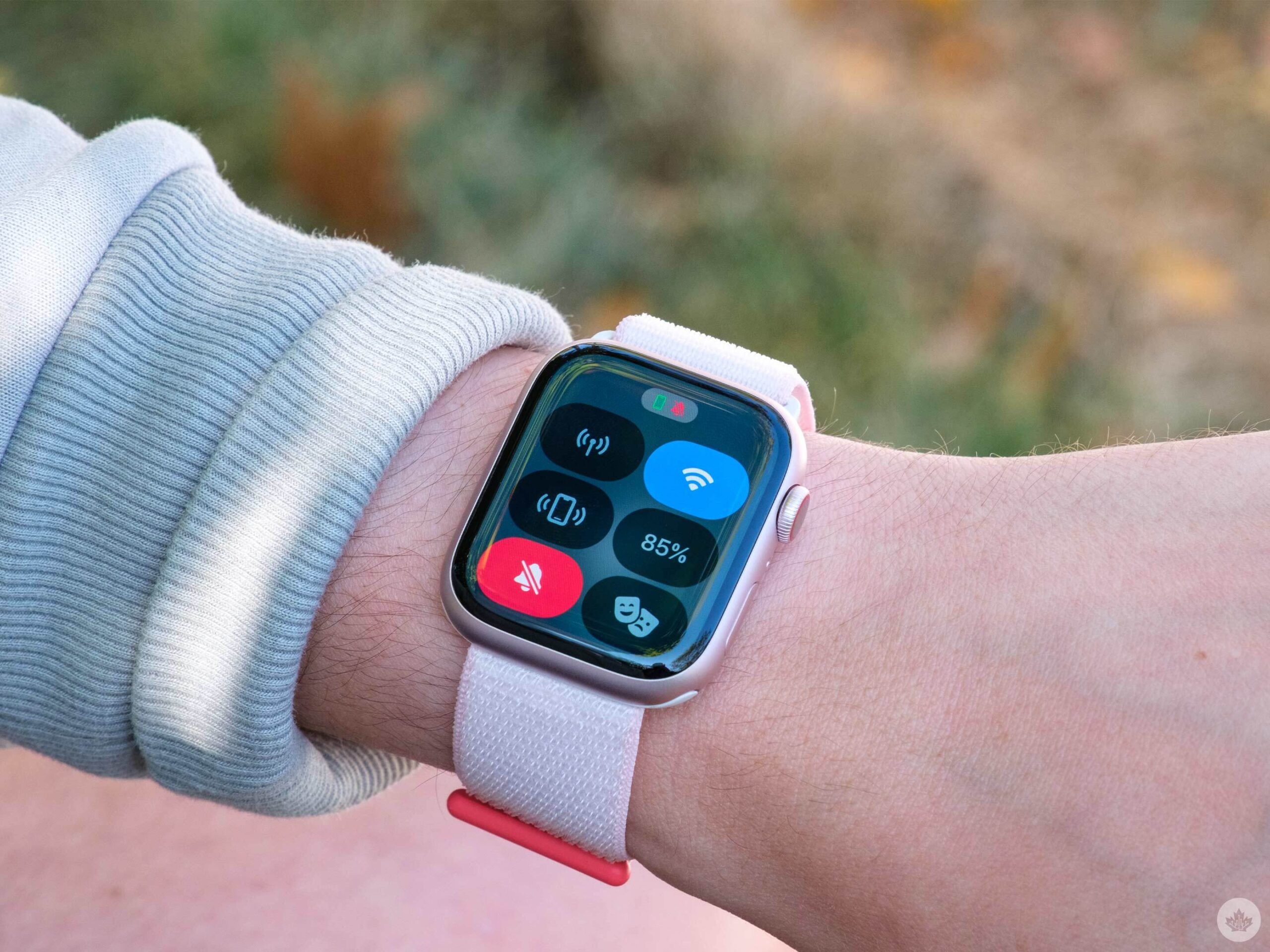 Many of the default apps have received slight redesigns to take better advantage of the Apple Watch’s more expansive display. Nearly every app has additional buttons to interact with and more information on-screen. All of these changes combine to add a lot to the Apple Watch and make interacting with it an overall more intuitive experience.
Many of the default apps have received slight redesigns to take better advantage of the Apple Watch’s more expansive display. Nearly every app has additional buttons to interact with and more information on-screen. All of these changes combine to add a lot to the Apple Watch and make interacting with it an overall more intuitive experience.
I’m also a fan of the new Watch Faces, with ‘Solar Analog’ and ‘Palette’ being two of my favourites this year. It’s important to mention watchOS 10 isn’t exclusive to just the Series 9 — the updated operating system works on the Series 4 and later.
Everything else
The Apple Watch Series 9’s other new features are less impactful but still cool. For example, there’s ‘Precision Finding for iPhone,’ which allows you to use the Series 9 to view the distance and direction to your iPhone 15 series device through ‘Find My.’ This is far more accurate than the way Find My works now, but it requires both devices to feature Apple’s 2nd-gen ultra wideband chip, which means you need an iPhone 15 Pro/Pro Max, iPhone 15/iPhone 15 Plus, Apple Watch Series 9 or Apple Watch Ultra 2, so not everyone will be able to take advantage of this more advanced location feature.
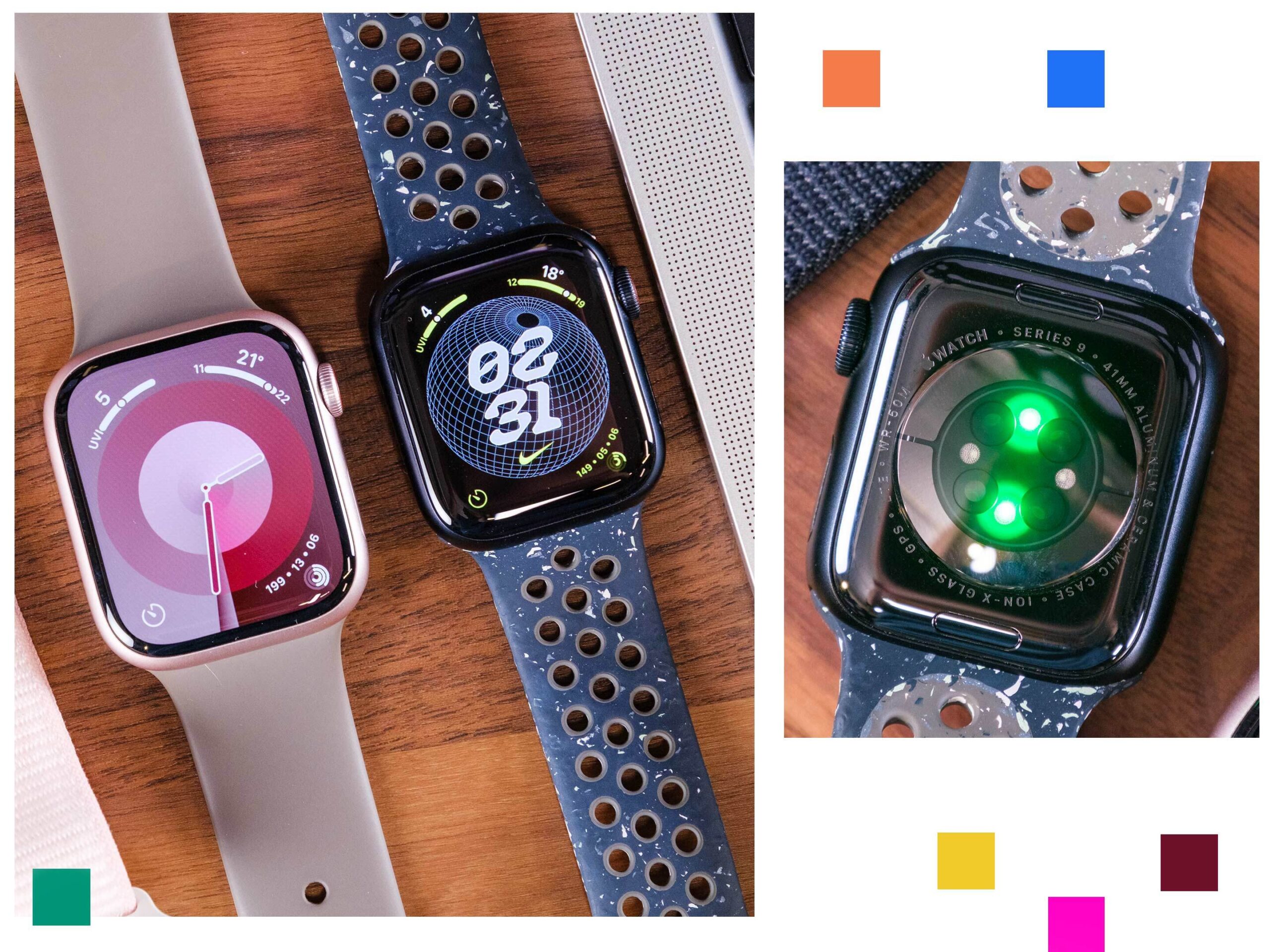 ‘Pink Aluminum,’ this year’s new colour, is sleek-looking. It’s a subtle pink that’s not overbearing, as you can likely tell from the images included in this review — it’s definitively not ‘Rose Gold,’ in a good way. The colour isn’t necessarily my taste (I prefer a darker Apple Watch colours), but over the last few days, I’m surprised how much it’s grown on me.
‘Pink Aluminum,’ this year’s new colour, is sleek-looking. It’s a subtle pink that’s not overbearing, as you can likely tell from the images included in this review — it’s definitively not ‘Rose Gold,’ in a good way. The colour isn’t necessarily my taste (I prefer a darker Apple Watch colours), but over the last few days, I’m surprised how much it’s grown on me.
Next, there’s Apple’s carbon neutral environmental efforts. The tech giant has announced several ambitious climate goals with the aim to be completely carbon neutral by 2030, and it’s positioning its Apple Watch line as the first step on that journey. The new Aluminum Apple Watch Series 9, the Apple Watch Ultra 2 and the Apple Watch SE (2nd-Gen) are now all completely carbon neutral when bought with specific bands.
“…Any way you look at it, the Apple Watch Series 9 is a minor upgrade over the Series 8.”
Apple says it achieves this carbon neutrality by using “100 percent clean electricity for manufacturing and product use, 30 percent recycled or renewable material by weight, and 50 percent of shipping without the use of air transportation.” The tech giant goes on to say it has made a “75 percent reduction in product emissions for each model.”
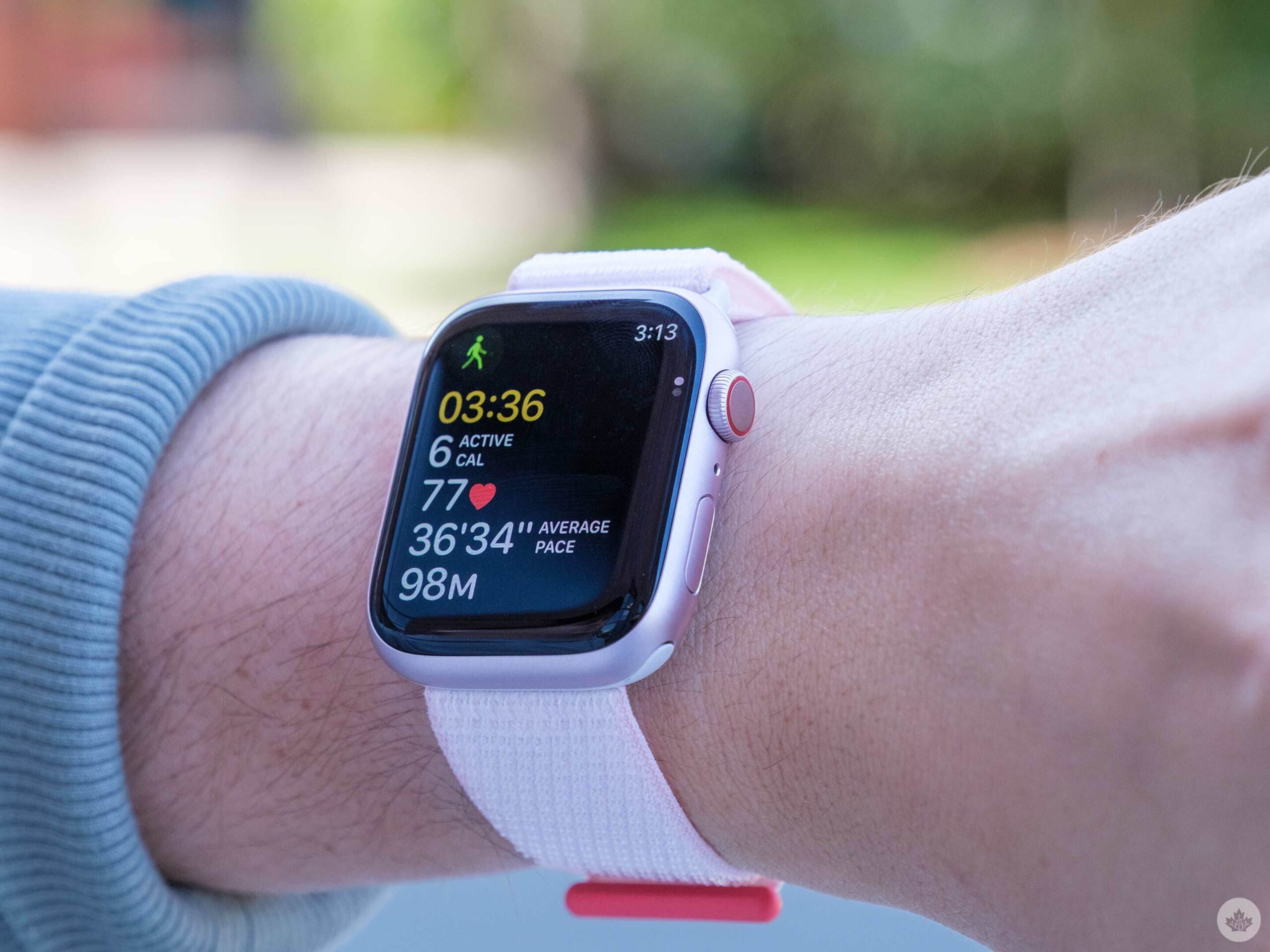 The carbon-neutral bands include — the Sport Loop (82 percent recycled yarn), Trail Loop ( 32 percent recycled content) and the Alpine Loop (43 percent recycled content).
The carbon-neutral bands include — the Sport Loop (82 percent recycled yarn), Trail Loop ( 32 percent recycled content) and the Alpine Loop (43 percent recycled content).
The new FineWoven Watch Band is constructed of 68 percent post-consumer recycled material and replaces the leather on the Magnetic Link and the Modern Buckle. I didn’t receive a FineWoven Band with my review Series 9, but it felt like a niche suede when I briefly wore it at Apple’s event.
All of this is great, and while the tech giant is obviously making these changes for positive press coverage, the environment still benefits (hopefully, it offsets the countless Lightning cables set to be tossed in the garbage in the coming years).
